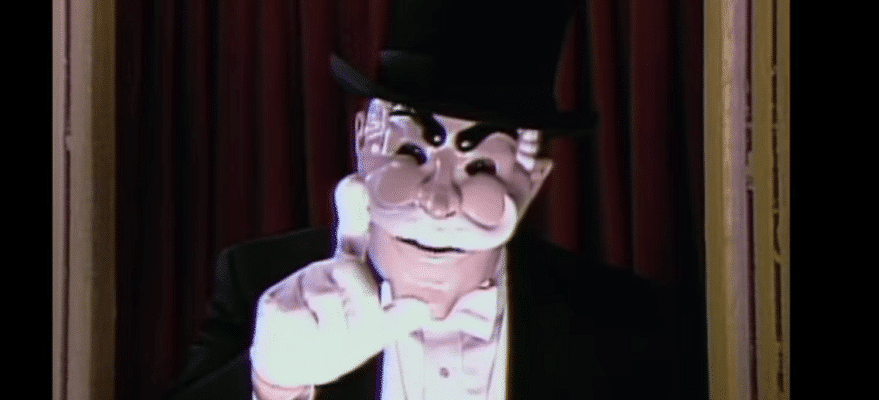About
About Kass’ Korner. I’m the president of Seabreeze Partners Management and write Doug’s Daily Diary for TheStreet's Real Money Pro. Stop by here for trading ideas, analysis on the stock market and the economy and the occasional song parody! Cramer founded TheStreet within 1996 and creates daily market comments for Real Funds Pro. In inclusion to hosting Angry Money with Jim Cramer on CNBC, he.
Doug Kass is the president of Seabreeze Partners Management Incand write Doug’s Daily Diary for Real Money Pro on TheStreet.
Until 1996, he was senior portfolio manager at Omega Advisors, a $6 billion investment partnership. Before that he was executive senior vice president and director of institutional equities of First Albany Corporation and JW Charles/CSG. He also was a General Partner of Glickenhaus & Co., and held various positions with Putnam Management and Kidder, Peabody. Kass received his bachelor’s from Alfred University, and received a master’s of business administration in finance from the University of Pennsylvania’s Wharton School in 1972. He co-authored “Citibank: The Ralph Nader Report” with Nader and the Center for the Study of Responsive Law and currently serves as a guest host on CNBC’s “Squawk Box.”
Doug on Twitter.
The Past, Present and Future

“Disasters have a way of not happening.”
– Byron Wien, The Blackstone Group
If optimism is the enemy of the rational buyer, then pessimism is his or her ally. Personally, I’m growing more constructive over the near term thanks to lower stock prices.
The Shanghai stock market fell by another 6% to its lowest level in more than a year. Oil also dropped below $30 but rallied back as of last check, while the S&P 500 futures were down by about 15 handles earlier but are now virtually unchanged.
The Present: A Flat and Interconnected World
Looking more broadly, the BRICs – Brazil, Russia, India and especially China – continue to export slower economic activity, lower corporate profits and deflation (especially of the “lower-oil” kind).
Many of business TV’s “talking heads” grossly underestimated and dismissed this theme throughout 2015, but often continue to be invited guests and maintain their “sound-byte” platforms.
But pride goeth before fall, and common sense and logic always trump investment dogma. I recommend investors do their own homework and consider outlier events (or what I call “possible improbables” in my annual “surprises” list.)
I remain short on Chinese stocks, and the iShares China Large-Cap ETF (FXI) remains on my “Best Short Ideas” list. I’ve consistently warned about China, and one of my primary intermediate-market concerns surrounds the region, which has been an engine of global growth.
There’s upwards of $5 trillion of U.S.-dollar-denominated debt around the world, which raises concerns that debt service will grow more difficult. Dismissing the difficulties surrounding China’s economic transition and debt overload in the Asian nation’s public sector, banking and shadow-banking corners makes little sense to me.
Meanwhile, Monday’s market action here at home was debilitating. Bank stocks led to the downside (I’m long and growing longer), as did energy stocks like Exxon Mobil (XOM) and Schlumberger (SLB). Media stocks like Comcast (CMCSA) and Walt Disney Co. (DIS) also fell.
The Future
But all of the above is history, and we exist here to look forward.
Looking ahead, I expect another ratchet down in global economic-growth expectations. The only question is to what degree U.S. stock prices have already priced this in.
Not surprisingly, investor sentiment has dropped coincident with lower stock prices. Although Wharton’s Dr. Jeremy Siegel is still a “sunshine boy,” general market expectations are low and growing lower. I even observed my old friend Thomas Lee retreating a bit in confidence and expectations on a recent CNBC appearance.
But when the most vociferous bulls curb their enthusiasm, it’s been my experience that that’s often a great time to take the contrarian view and buy.

As I suggested in yesterday’s opener, my judgment is that the S&P 500 is about fairly valued – although as always, some individual sectors are overvalued and others are undervalued. My missive from yesterday morning clearly delineates my specific overall market view over both the short term (more bullish on weakness) and the intermediate term (bearish).
The Bottom Line: Forget the Past
“The market is like Sears Roebuck; it’s a discounter. When the pastrami sandwiches are heaping with lean meat and when the deli man is giving me market tips, you should sell. And when the world looks like it’s ending and there’s too much fat instead of good meat in the pastrami sandwich at Katz’s Delicatessen (because they want to save money and boost margins) served by the same deli man, you should buy.”
– Grandma Koufax
I feel strongly that now isn’t the time to listen to the “perma-bears,” those renewed and increasingly ubiquitous Cassandras. Just like “perma-bulls,” perma-bears aren’t attention getters, not money makers.
Realmoney Pro
The time to sell has likely passed. Those opportunities had been in place since last spring and were the outgrowth of a deteriorating fundamental and technical backdrop that many investors ignored.
The Street Real Money Pro
But while I have a more-constructive market view for the short term my confidence level isn’t high. In a fragile-growth setting, too much can upset the apple cart.
So, I’m moving closely around market neutral these days, but actively and opportunistically trading indices through the SPDR S&P 500 ETF (SPY) and the PowerShares QQQ ETF (QQQ). I’m trying to take advantage of the lunatic, exaggerated daily market moves caused by risk-parity strategies, gamma hedging and other quant fools. They’re the tail that wags the market’s dog, and they provide opportunities for the aggressive trader.
As I recently wrote, this correction may be a time to buy, but not the time to buy. I look at the gap between market prices and intrinsic values – and unlike many, the lower the market moves, the less fearful I become as the risk-vs.-reward ratio improves.
I’ll outline my current strategy in greater detail a little later this morning.
My investment experience is that it’s not smart to be fearful when most people are fearful.
Doug Kass Real Money Pro Contributor
I’ve also come to realize that buyers live higher and sellers live lower (there’s comfort in crowds and herds!). That’s particularly true in our quant-influenced marketplace. This bizarre behavior has encouraged me to short rips and buy dips over the last year.
In an exchange of e-mails last night with my pal and RealMoneyPro colleague James “RevShark” DePorre, I asked Rev if he though whether last Wednesday’s S&P 500 noon low of about 1,815 or Wednesday morning’s gap lower at 1,850 were more important to him. Rev responded with the latter, and I get that.
I believe 1,850 could be challenged – we were within some 25 handles of that on the futures at last check, and last night we were within five handles. But I continue to expect stocks not to challenge 1,815, and I’m prepared to buy gingerly on any further weakness.
My shorting focus has been broad, but my long focus has been on banks – which have solid profits growth and low valuations – and retail stocks, which are large beneficiaries of lower oil and low valuations).
The former reported fourth-quarter results that were in-line or better, which I expect to continue despite the challenge of a flatter yield curve that’s likely discounting a deep recession.
I also note that Huntington Bancshares (HBAN) this morning announced the acquisition of FirstMerit (FMER), a former holding of mine, for a relatively large premium. Although we’ve likely seen “Peak M&A” in 2015, I expect some acceleration in takeover activity once the international arena stabilizes.
Those with a more-conservative risk profile should consider staying away from stocks for now because we’re basically at fair market value. But personally, I’m starting the day slightly net long, and my next move will likely be to expand my long exposure even further.
I think reasonable values are emerging, depending on your risk profile and timeframes. And despite the volatility and dispiriting price action, I’m not equivocating from my more-constructive near-term market view.
What’s most important to me is that lower stock prices bring on a better upside/downside equation in certain sectors and individual equities.